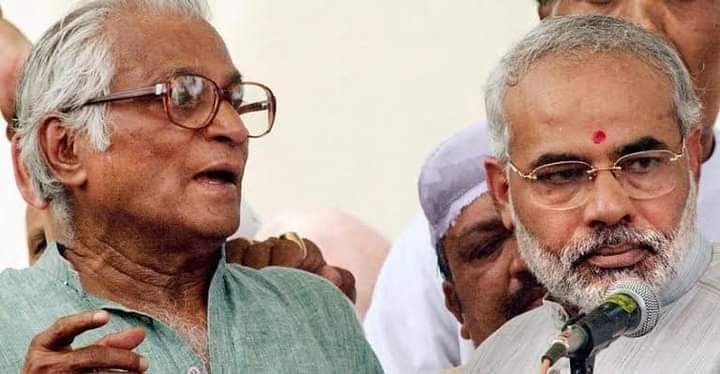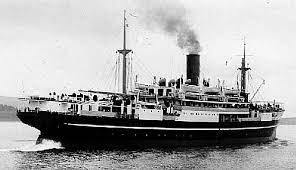
#SheshadriIyerJayanti
Shivanasamudra is where Asia’s first major hydroelectric power plant began operations from on September 26, 1908. The then-king of Mysore, Nalwadi Krishnaraja Wodeyar, ushered the electrical era in style by switching on the power from his throne room in


Shivanasamudra is where Asia’s first major hydroelectric power plant began operations from on September 26, 1908. The then-king of Mysore, Nalwadi Krishnaraja Wodeyar, ushered the electrical era in style by switching on the power from his throne room in



Jagan Mohana Palace.
He then turned to commend K. Sheshadri Iyer, the Dewan of Mysore, whose vision and tireless efforts had resulted in the state harnessing power from the flow of river at Shivanasamudra. This is just one of the many achievements of the man regarded by most at
He then turned to commend K. Sheshadri Iyer, the Dewan of Mysore, whose vision and tireless efforts had resulted in the state harnessing power from the flow of river at Shivanasamudra. This is just one of the many achievements of the man regarded by most at
the ‘Maker of Modern Bangalore.’
Well, this article is all about K Seshadri Iyer’s vision, efforts, and the achievements of this brilliant man.
Sir Kumarapuram Seshadri Iyer served as the Dewan of Mysore. K Seshadri Iyer was the second Dewan of Mysore state and was also its
Well, this article is all about K Seshadri Iyer’s vision, efforts, and the achievements of this brilliant man.
Sir Kumarapuram Seshadri Iyer served as the Dewan of Mysore. K Seshadri Iyer was the second Dewan of Mysore state and was also its

longest-serving Dewan.
Born to Ananthakrishna Iyer and Venkatalakshamma on June 1, 1845, Seshadri Iyer spent his early childhood in Palghat. His great-grandfather Gowri Seshan Pattu had migrated to Palghat from Tanjore district in Tamil Nadu at the turn of the 19th century.
Born to Ananthakrishna Iyer and Venkatalakshamma on June 1, 1845, Seshadri Iyer spent his early childhood in Palghat. His great-grandfather Gowri Seshan Pattu had migrated to Palghat from Tanjore district in Tamil Nadu at the turn of the 19th century.
After completing his early education in Calicut and Trivandrum, Seshadri Iyer graduated in arts from Presidency College in Madras in 1868.
From 1881 to 1883, he served as an officer in the services of the kingdom of Mysore, first as a district magistrate and later as personal
From 1881 to 1883, he served as an officer in the services of the kingdom of Mysore, first as a district magistrate and later as personal
secretary to the first Dewan of Mysore, Rangacharlu. When Rangacharlu died in 1883, Sheshadri Iyer succeeded him. The previous dewan had been a brilliant, courageous and highly respected administrator, and Sheshadri Iyer was determined to be the same.
He began by commissioning
He began by commissioning

the Shivanasamudra hydroelectric project and focusing on the mining operations at Kolar Gold Fields (KGF). Once the hydroelectric project commenced operations, he drew a voltage line from Shivanasamudra to KGF, revolutionising mining operations at the gold field.
The gold fields
The gold fields
were 147 km away from the waterfalls, making the transmission line the longest in the world at the time. THIS WAS IN 1902.
The hydroelectric plant at Shivanasamudra, called the Sir Sheshadri Hydel Station, also supplied power for the construction of the Mettur dam in Tamil Nadu
The hydroelectric plant at Shivanasamudra, called the Sir Sheshadri Hydel Station, also supplied power for the construction of the Mettur dam in Tamil Nadu

in the 1930s, In May 2006, it was made a National Heritage Centre.
Jamsetji Nusserwanji Tata was convinced that the future progress of the country depended crucially on research in science and envisaged an institution that would encourage the same. In 1898, he was on the
Jamsetji Nusserwanji Tata was convinced that the future progress of the country depended crucially on research in science and envisaged an institution that would encourage the same. In 1898, he was on the
lookout for a suitable place for such an institution when he met and discussed his idea with Sheshadri Iyer.
Agreeing with Tata on the fact that a better quality education would serve the country well, he convinced the then-ruler of Mysore, Krishnaraja Wodeyar IV, to donate
Agreeing with Tata on the fact that a better quality education would serve the country well, he convinced the then-ruler of Mysore, Krishnaraja Wodeyar IV, to donate
roughly 372 acres of free land in the heart of Bangalore and provide other necessary facilities. This educational institution later became the Tata Institute of Science, renamed the Indian Institute of Science (IISC) in 1911.
Other than starting insurance schemes for government
Other than starting insurance schemes for government

employees, he also started agricultural banks to help poor farmers and land owners who had to depend on loans from private parties at higher interest rates. He also codified the revenue lands in the state and undertook the cleaning and desilting of reservoirs to improve
irrigation and water storage.
In 1889 he constructed the famous Glass House at Lalbagh. The Glass House is the Lalbagh garden’s biggest attraction. Also, to use it as a venue to host the flower shows. The first flower show at Glass House was in the year 1912.
In 1889 he constructed the famous Glass House at Lalbagh. The Glass House is the Lalbagh garden’s biggest attraction. Also, to use it as a venue to host the flower shows. The first flower show at Glass House was in the year 1912.

In 1898, a devastating plague in Bangalore wiped out most of the city’s population. In the aftermath of the disaster, Sheshadri Iyer took many steps to help the people of the city and improve their living conditions. Streets were decongested, trees were planted, roads were
widened and sanitation was improved. Many new commercial and industrial units were established to increase employment opportunities for the people of the city.
The Result was Victoria Hospital which is serving 1000s everyday till date.
Other than beginning the extension of
The Result was Victoria Hospital which is serving 1000s everyday till date.
Other than beginning the extension of

residential areas in Basavanagudi and Malleswaram, Seshadri Iyer started the Chamarajendra Water Works to supply water to the city from Hesaraghatta Lake in 1894. With the help of a brick aqueduct and steam engines, water was pumped up to a reservoir from where it flowed to 

Malleswaram and then to the rest of the city. This simple yet effective design worked brilliantly between 1894 and 1935, serving as a substantial source of water for about 45 years.
Having administered the kingdom of Mysore for a span of 18 years, Sheshadri Iyer remains the
Having administered the kingdom of Mysore for a span of 18 years, Sheshadri Iyer remains the
longest-serving Dewan of our Mysore. A disciplined life, dedication to duty, and practical imagination were the hallmarks of this exceptional statesman. In his book ‘Gold, Sport and Coffee Planting in Mysore,’ Robert H.Elliot says:
“I may pause here to remark that what I saw
“I may pause here to remark that what I saw
and heard at the Assembly, combined with what I previously knew of the Mysore Government, satisfied me that a more perfect form of government does not exist in the world…..While I have heard much in favour of the Dewan, I have never heard a single deprecatory remark made
concerning his administration of the province, either by natives or Europeans. Mysore is indeed extremely fortunate in having such a man as Mr. Seshadri Iyer, since made Sir K. Seshadri Iyer, at the head of affairs.”
In present-day Bengaluru, Seshadripuram (a city extension
In present-day Bengaluru, Seshadripuram (a city extension
created in 1892), Seshadri Road, Seshadri Memorial Library, and his statue in the Cubbon Park remind citizens of this legendary administrator’s valuable contributions.
#ForgottenHeroes
#VandeMataram
#ForgottenHeroes
#VandeMataram

• • •
Missing some Tweet in this thread? You can try to
force a refresh


















